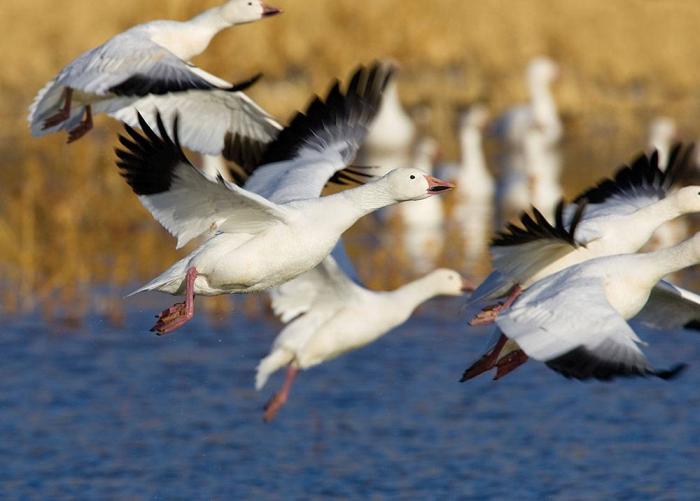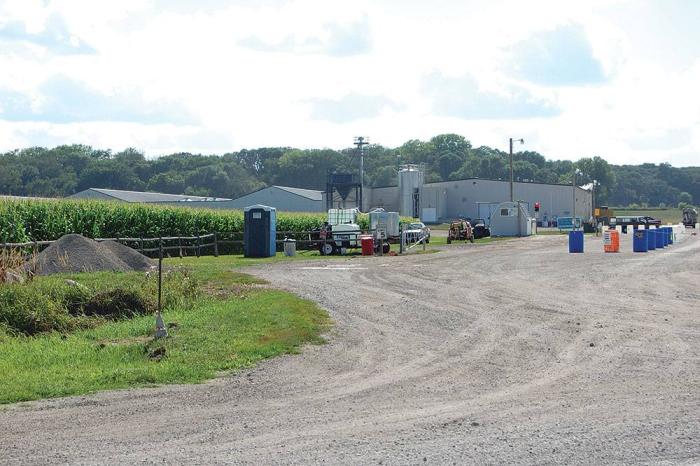Dr. David Halvorson, professor emeritus, department of veterinary and biomedical sciences, University of Minnesota, said that the relatedness of the viral isolates coupled with the timeline of the outbreak provide evidence that there were approximately 40 primary introductions of the virus from the wild bird reservoir. He told the audience at USPOULTRY’s Live Production & Welfare Seminar that probably as many as 25 of these introductions were controlled, but the other 15 introductions weren’t controlled immediately and led to secondary spread -- lateral movement from farm to farm.
Avian flu viral load
Halvorson, who has worked in Minnesota for decades, said that, even though the Minnesota poultry industry has lots of experience with low path avian influenza, it wasn’t prepared for this highly pathogenic strain of avian flu. He said that an individual waterfowl can excrete 10 billion viruses of this flu strain, which doesn’t make the duck or goose sick, every day. So, 1 million waterfowl, what Halvorson called a realistic number for the “Land of 10,000 Lakes,” could excrete 10 quadrillion viruses per day into the environment.
Snow geese and Canada geese may have spread the virus in North America, according to Halvorson. Both species are migratory, but they also have winter resident populations in Minnesota. Migratory individuals in this species could have picked up virus from birds on the west coast and brought it to the Midwest, where resident populations of these species became carriers. This scenario would explain the presence of the virus in Minnesota in March when the outbreak started.

Kenneth Canning/istockphoto | Snow geese are one of the species of waterfowl that could have carried the avian influenza virus from the arctic to the Midwestern U.S.
Avian influenza virus survives indefinitely at freezing temperatures. Halvorson suggested that “freeze-dried” virus in large quantities contaminating the environment is what led to the large number of introductions of the virus from wild bird populations to domestic poultry.
Avian flu virus overwhelms resources
“We failed to understand the potential scope of the outbreak,” Halvorson said. “No one planned for 40 introductions, and that left us short on people and resources. All of the planning was based on getting an introduction, then establishing a control zone and stamping it out.”
At the peak of the outbreak on April 24, 2015, Minnesota had 57 control areas 10 kilometers in diameter each. This put more than 6,000 square miles in control zones -- an area bigger than the entire state of Connecticut and just less than New Jersey. He said that, at that point, it is impossible to do everything right because there are not enough people and other resources.
“The virus was too thick and the control effort was too thin,” he said. The longer it took to depopulate a farm, then the more virus that was shed. Crews of hundreds of people used to depopulate farms had to leave the farm every day, creating the opportunity to carry virus off the farm.
“How are you going to control their contamination level?” Halvorson asked. “The answer is, you can’t.”
He called the situations where crews of inexperienced people were brought onto large farms to accomplish depopulation as quickly as possible a “catastrophe” because you had that many people coming onto and off the infected farm every day and these people had to go back home or to hotels and restaurants each evening, possibly spreading the virus. This has led to the consideration of ventilation shut down as a means of rapid depopulation.
Industry responsible for avian flu control
“When you have a disease outbreak like this, it is the industry that has allowed it to happen,” Halvorson said. “The industry is the only group that can control it. I think we all get the mistaken idea that the government is going to control the disease, that APHIS is going to come in and control the disease. No, that isn’t what they are going to do. They are going to come in and assist you with killing the flock and assist you with your cleaning and disinfection procedures, but they are not going to control the disease. They don’t have the manpower, the wherewithal, the knowledge or the skills to do that.”

Terrence O'Keefe | A high-pressure sprayer at the entrance to this Iowa layer farm provides an example of the improvised biosecurity measures implemented as a result of the avian flu outbreak.
As the outbreak progressed, the virus became better adapted to poultry.
“At the beginning of the outbreak, you had a virus that wasn’t so good at infecting chickens, but by April, the virus was very good at infecting chickens,” Halvorson said.
Avian flu spreading from farm to farm
The 40 introductions of the avian flu virus from the wild onto poultry farms has been confirmed by molecular analysis of the virus isolates, and this analysis has also been used to show the lateral spread from these introductions. Minnesota, North and South Dakota, Wisconsin, Missouri and Arkansas had around 35 introductions from the wild, or index cases, and lateral spread to around 90 more premises. On average, each index case in these states subsequently led to around 2.5 more farms becoming infected with the virus.
In contrast, Iowa appears to have only had two introductions from wild birds, and these each resulted in about 37 other farms becoming infected with the avian flu virus. Halvorson said that one factor that likely contributed to the rapid spread of the virus from farm to farm was the fact that birds could be infected and shed virus in large quantities for five to 10 days prior to mortality increasing.
“So your daily biosecurity has to be pretty good or else you can be inadvertently spreading the virus, and we certainly did that,” he said.
Greatest threat is outside your barn door
Halvorson said biosecurity practices that had worked in the past, which were good enough for Mycoplasma gallisepticum, laryngotracheitis, and low path avian flu, were not enough to protect poultry farms from wild bird introductions of highly pathogenic avian flu. The approximately 40 introductions of avian flu from wild birds was unprecedented. He said that, in most states -- with the exception of Iowa -- biosecurity worked “pretty well” to prevent lateral spread.
The epidemiologic surveys filled out comparing farms that got avian influenza from control farms that didn’t get the disease suggests some associations between certain farm practices and increased risk of getting the disease. But, every farm is different and site-specific biosecurity plans are recommended based on that farm’s circumstances.
There is a consensus on what biosecurity programs for poultry farms need to incorporate, according to Halvorson. He said that each farm’s biosecurity plan needs for someone to be in charge, preferably a veterinarian. There needs to be training for all employees. The biosecurity plan has to incorporate the line of separation; peripheral buffer area; control movement of personnel and equipment, live birds, dead birds, manure and eggs; exclude wild birds from structures on the farm; and be reviewed with an eye toward continuous improvement.
The H5 highly pathogenic avian flu virus that has come to North America from Asia is probably here to stay for at least a few years, according to Halvorson, because the virus has persisted in Asia for 19 years. U.S. poultry producers have to assume that the virus might be just outside the barn door.

No comments:
Post a Comment